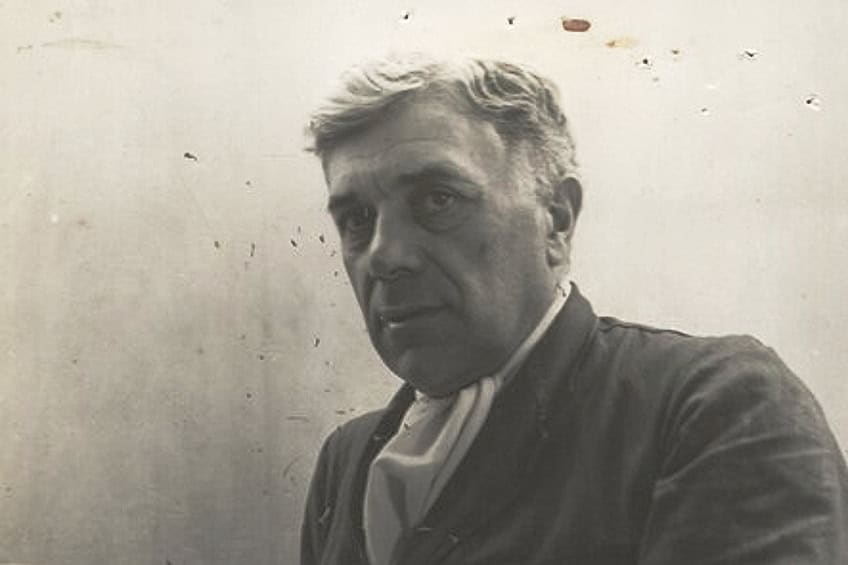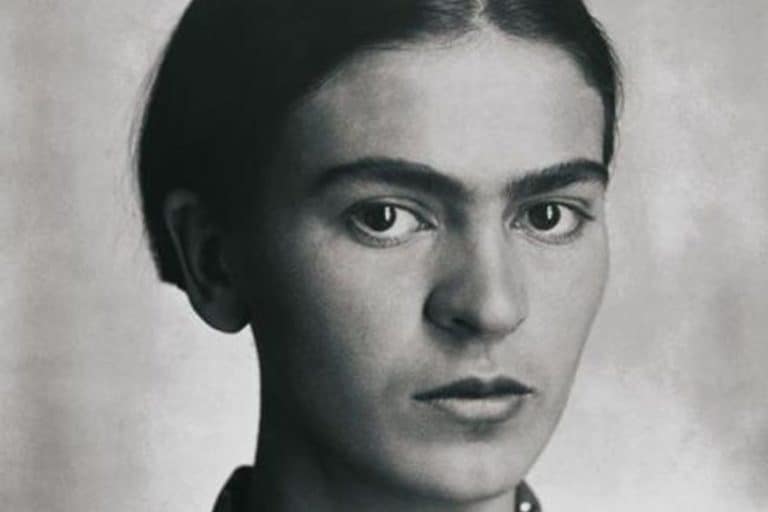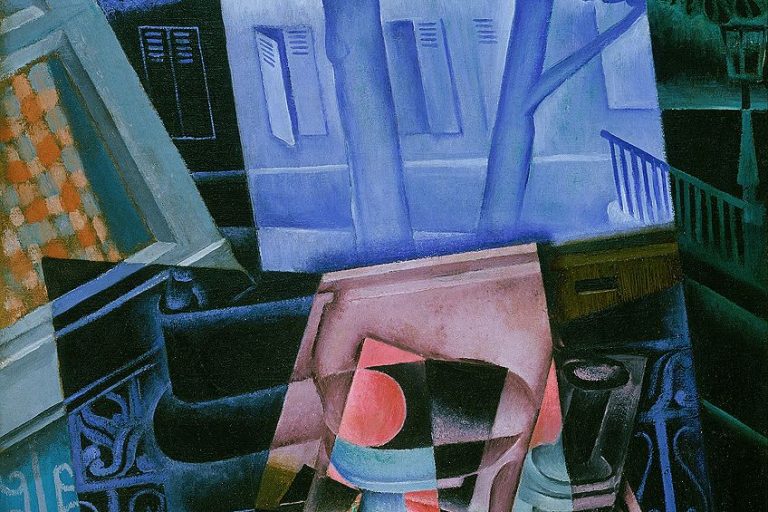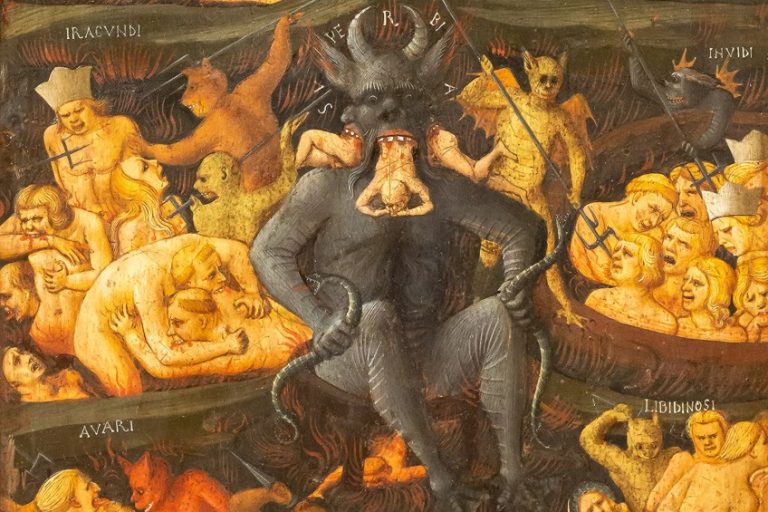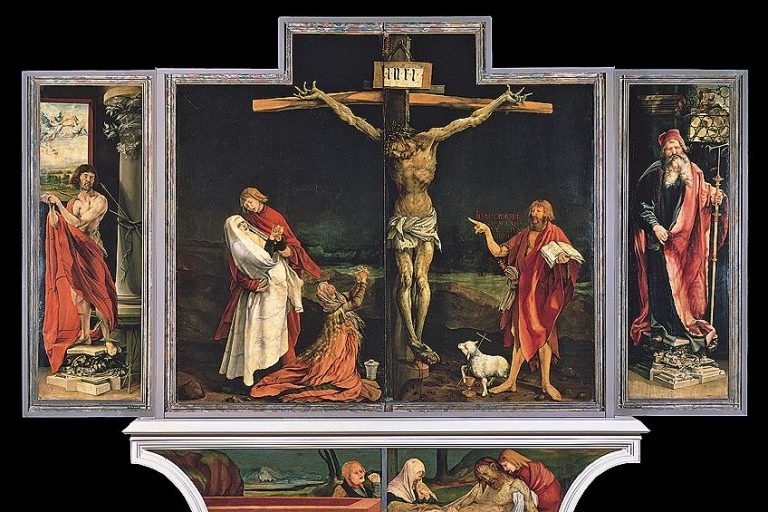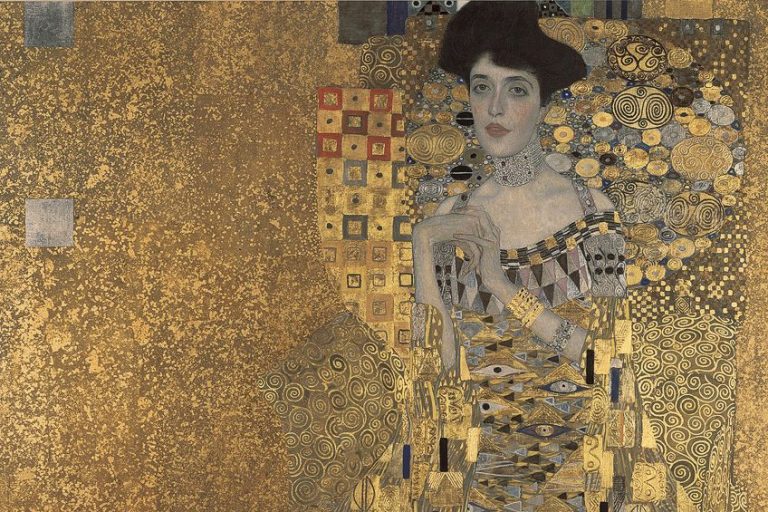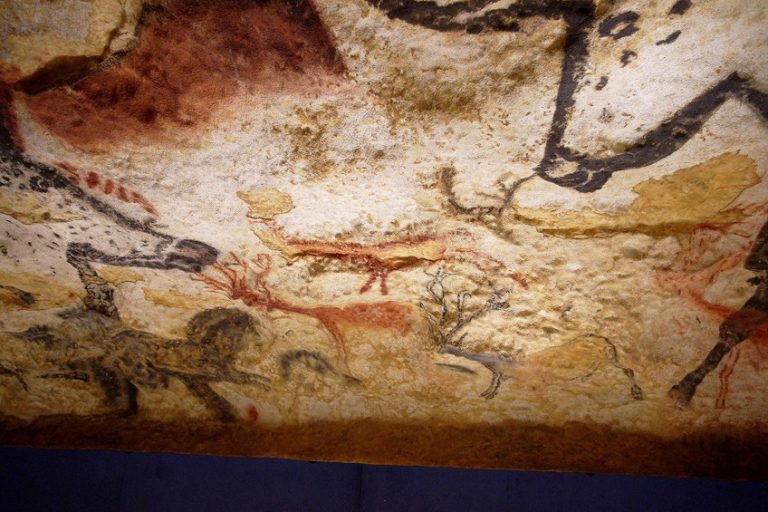“Houses at l’Estaque” by Georges Braque – Cubist Geometry
Houses at l’Estaque is a pivotal work by Georges Braque, created in 1908 during a transformative period in the artist’s career. This painting is a seminal example of early Cubism, a movement co-founded by Braque and Pablo Picasso. Inspired by the rugged landscapes and geometric forms of the village of L’Estaque in southern France, Braque deconstructed the traditional perspective, emphasizing fragmented shapes and muted colors. This approach not only challenged conventional artistic norms but also laid the foundation for Cubism’s innovative exploration of form and space. Houses at l’Estaque exemplifies Braque’s ability to blend natural landscapes with abstract elements, marking a significant shift in the evolution of modern art.
Key Takeaways
- Houses at l’Estaque is a foundational work of Cubism by Georges Braque.
- The painting reflects Cézanne’s influence and introduced the term “Cubism.”
- It is housed in the Lille Métropole Museum of Modern, Contemporary, and Outsider Art (LaM) and marks Braque’s shift to geometric abstraction.
Historical Context and Artistic Influence
| Artist | Georges Braque (1882 – 1963) |
|---|---|
| Date Created | 1908 |
| Medium | Oil on canvas |
| Genre | Landscape |
| Period/Movement | Cubism |
| Dimensions (cm) | 40.5 x 32.5 |
| Series/Versions | N/A |
| Where Is It Housed? | Lille Métropole Museum of Modern, Contemporary and Outsider Art (LaM), Villeneuve d’Ascq, France |
| What It Is Worth | Estimated value not publicly disclosed |
Georges Braque’s Houses at l’Estaque, painted in 1908, marks a pivotal turn in art history as one of the foundational works of Cubism. This oil-on-canvas masterpiece not only demonstrates Braque’s shift towards geometric forms and muted color palettes but also reflects the profound influence of Paul Cézanne. L’Estaque, a favorite painting location of Cézanne, provided the backdrop for Braque’s innovative vision, blending the legacy of his predecessor with his emerging Cubist style.

The painting’s significance extends beyond its visual elements; it played a crucial role in defining the Cubist movement. Art critic Louis Vauxcelles’ reference to the painting as made up of “cubes” catalyzed the term “Cubism,” highlighting the radical departure from traditional perspectives that Braque and his contemporaries were exploring. Housed in the Lille Métropole Museum of Modern, Contemporary and Outsider Art, Houses at l’Estaque remains a testament to Braque’s pioneering approach and his lasting impact on modern art.
Origins of Cubism
Braque’s Houses at l’Estaque, painted in 1908, is widely regarded as a foundational piece in the emergence of Cubism. This movement sought to challenge traditional perspectives and represent three-dimensional objects from multiple angles simultaneously.
Pablo Picasso was another major figure in Cubism, whose work, Les Demoiselles d’Avignon, profoundly inspired Braque.
Art critic Louis Vauxcelles coined the term “Cubism” after remarking on the geometric simplicity in Braque’s painting. This piece was showcased at the Salon d’Automne, further solidifying its impact. Cubism broke away from the naturalistic depictions of the 19th century, steering towards abstraction and emphasizing the flatness of the canvas.
Influence of Cézanne and Fauvism
Paul Cézanne’s influence is unmistakable in Braque’s Houses at l’Estaque. Cézanne, often painting in L’Estaque, implemented a technique that broke forms into simple geometric shapes and employed uni-directional brushwork. Braque adopted these methods, aiming to reduce the landscape to its fundamental components.

Henri Matisse and the Fauvism movement also impacted Braque’s early work, characterized by bold colors and painterly freedom. Although Houses at l’Estaque marks a departure towards muted colors and structured form, the Fauvist legacy of vibrant, expressive color is present in his stylistic development.
By blending Cézanne’s analytical approach with the expressive qualities of Fauvism, Braque forged a new artistic path that led to the birth of Cubism.
Artistic Elements and Style
Georges Braque’s Houses at l’Estaque is a crucial work in the development of Cubism, featuring unique artistic elements that mark a shift in style and technique. This section delves into its composition, perspective, and use of color and form.
Composition and Perspective
Braque employs a distinctive perspective in Houses at l’Estaque, utilizing overlapping geometric forms that create a flattened picture plane. The painting depicts a fragmented village scene with simplified forms and little cubes dominating the composition. The foreground and background meld seamlessly, challenging traditional spatial distinctions. Trees and structures are reduced to basic shapes, reflecting Proto-Cubist influences.
Braque’s approach to perspective renders the scene almost abstract, aligning with Cubist principles.
Use of Color and Form
The color palette in Houses at l’Estaque is muted, dominated by earthy tones that emphasize the geometric forms. Braque uses simplified hues to highlight the interlocking cubes and planes within the composition. This contrasts with the vibrant colors typical of earlier movements such as Impressionism.
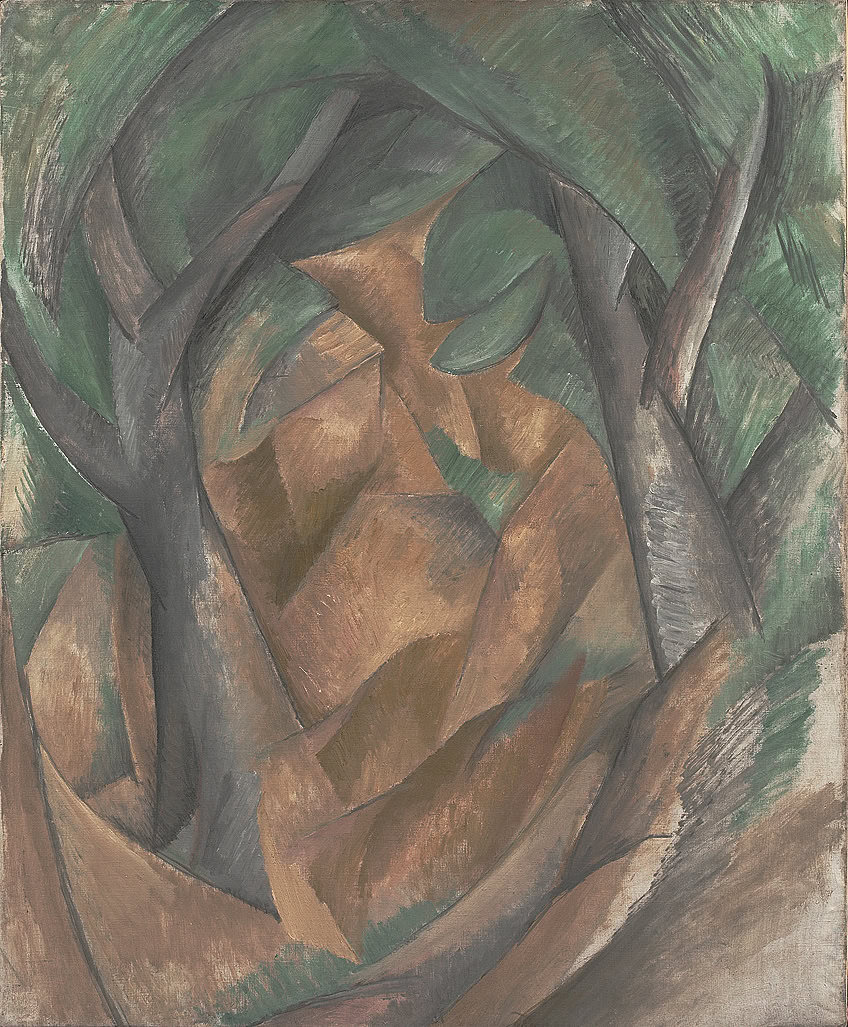
The forms in the painting are stripped of detail, focusing on their structural essence. This simplification of form contributes to the painting’s abstract quality, making it a pivotal Cubist landscape. The use of color and form showcases Braque’s commitment to analyzing objects from multiple perspectives.
Critique and Interpretation
Houses at l’Estaque by Georges Braque has often been discussed for its revolutionary artistic style and the reactions it provoked among critics. The piece, an essential work in Proto-Cubism, challenges traditional notions of landscape representation through its abstract, geometric forms.
Reception by Art Critics
Louis Vauxcelles, a prominent art critic, coined the term “Cubism” after mocking Braque’s painting. He remarked that the work seemed composed of “cubes,” which inadvertently named the movement. Vauxcelles’s critique highlighted the painting’s departure from classical perspectives. Charles Morice, another influential critic, provided a more scholarly critique.
He emphasized the painting’s structural composition, noting how Braque’s use of muted browns and greens reduced the landscape to fundamental shapes.
This perspective acknowledged the artist’s intent to strip nature down to its simplest forms. Art critics widely regard this painting as a milestone in modern art, emphasizing its role in the transition from traditional to modern aesthetics. Braque’s innovative approach laid the foundational principles for future Cubist works, contrasting sharply with the realism of prior art.
Symbolism and Representation
Georges Braque’s Houses at l’Estaque presents a small village near Marseille, depicted through abstract forms. The painting blurs the lines between natural representation and geometric abstraction, illustrating Braque’s shift towards Cubism. This work exemplifies a Proto-Cubist landscape, where traditional elements are simplified into geometric shapes. The muted palette of browns and greens conveys a sense of simplicity and austerity, focusing on form over color.
The village, houses, and trees become almost indistinguishable, symbolizing Braque’s effort to represent multiple viewpoints simultaneously. Braque drew inspiration from Paul Cézanne, echoing his focus on structure and form. By reducing the landscape to its essential elements, Braque sought to capture the underlying essence of the scene rather than its literal appearance. Houses at l’Estaque thus serves as a pivotal piece in the evolution of modern art, bridging the gap between Impressionism and Cubism through its symbolic abstraction.
Legacy and Exhibition
Houses at l’Estaque is a seminal piece that had profound impacts on the art world, particularly in establishing the Cubist movement. This painting, a cornerstone of Analytical Cubism, continues to be displayed in significant collections and galleries worldwide.
Impact on Modern Art
The painting Houses at l’Estaque played a pivotal role in the development of Cubism, especially Analytical Cubism. Georges Braque, in collaboration with Pablo Picasso, revolutionized artistic representation by breaking down objects into geometric shapes and reassembling them in abstracted forms. Their work encouraged artists to perceive and portray reality differently.
Critic Louis Vauxcelles, upon seeing Houses at l’Estaque, is famously known to have remarked about its “cubes,” contributing to the name of the Cubist movement.
The painting’s emphasis on form rather than color and its deconstruction of perspective had lasting effects on modern art. Daniel-Henry Kahnweiler, a prominent art dealer, also played a crucial role in supporting and promoting Braque’s works, leading to wider recognition and acceptance.
Displays and Collections
Houses at l’Estaque has been displayed in numerous galleries and museums, highlighting its significance in art history. Currently, the painting is housed in the Lille Métropole Museum of Modern, Contemporary and Outsider Art (LaM), France. Its presence there draws art enthusiasts and scholars who seek to understand the origins and evolution of Cubism.
During its early years, the painting was exhibited in Paris, where it caught the attention of art critics and collectors. Despite World War I disrupting the art scene, Braque’s work survived and continued to influence subsequent generations. Today, Houses at l’Estaque remains a key exhibit in discussions and displays of modern art, serving as a testament to Braque’s innovative vision.
Houses at l’Estaque stands as a testament to Georges Braque’s revolutionary approach to art and his crucial role in the birth of Cubism. This painting not only captures the serene yet dynamic essence of the L’Estaque landscape but also showcases Braque’s innovative use of geometry and abstraction. By challenging traditional perspectives and emphasizing the fragmented nature of reality, Braque paved the way for future artistic exploration and profoundly influenced the course of modern art. Houses at l’Estaque remains a significant work, exemplifying the bold experimentation and transformative vision that defined early 20th-century avant-garde movements.
Frequently Asked Questions
What Is the Historical Significance of Houses at l’Estaque in the Context of Early 20th-Century Art?
Houses at l’Estaque, painted in 1908, is considered one of the first Cubist landscapes, marking a pivotal moment in the shift toward modern art. This painting influenced the Cubist movement’s formation and showcased the transition from traditional representation to abstract forms.
How Does Houses at l’Estaque Illustrate the Principles of Cubism?
This painting employs simple geometric shapes and a muted color palette, hallmarks of Cubism. The depiction of an abstract landscape with fragmented forms and reduced detail exemplifies the Cubist principle of presenting multiple perspectives simultaneously.
Can the Influence of Cézanne’s Work Be Seen in Houses at l’Estaque?
Yes, the influence of Paul Cézanne is evident in Braque’s use of geometric simplification and a focus on structure. Braque visited l’Estaque after Cézanne’s death, and the homage to Cézanne’s techniques is clear in the compositional style.
How Did Houses at l’Estaque Contribute to Georges Braque’s Reputation as a Leading Figure in Modern Art?
This painting firmly established Braque as a central figure in the Cubist movement. Art critic Louis Vauxcelles’s reference to cubes in describing this work underscored Braque’s role in naming and shaping the direction of Cubism, thereby securing his place in art history.
Isabella studied at the University of Cape Town in South Africa and graduated with a Bachelor of Arts majoring in English Literature & Language and Psychology. Throughout her undergraduate years, she took Art History as an additional subject and absolutely loved it. Building on from her art history knowledge that began in high school, art has always been a particular area of fascination for her. From learning about artworks previously unknown to her, or sharpening her existing understanding of specific works, the ability to continue learning within this interesting sphere excites her greatly.
Her focal points of interest in art history encompass profiling specific artists and art movements, as it is these areas where she is able to really dig deep into the rich narrative of the art world. Additionally, she particularly enjoys exploring the different artistic styles of the 20th century, as well as the important impact that female artists have had on the development of art history.
Learn more about Isabella Meyer and the Art in Context Team.
Cite this Article
Isabella, Meyer, ““Houses at l’Estaque” by Georges Braque – Cubist Geometry.” Art in Context. July 16, 2024. URL: https://artincontext.org/houses-at-lestaque-by-georges-braque/
Meyer, I. (2024, 16 July). “Houses at l’Estaque” by Georges Braque – Cubist Geometry. Art in Context. https://artincontext.org/houses-at-lestaque-by-georges-braque/
Meyer, Isabella. ““Houses at l’Estaque” by Georges Braque – Cubist Geometry.” Art in Context, July 16, 2024. https://artincontext.org/houses-at-lestaque-by-georges-braque/.


